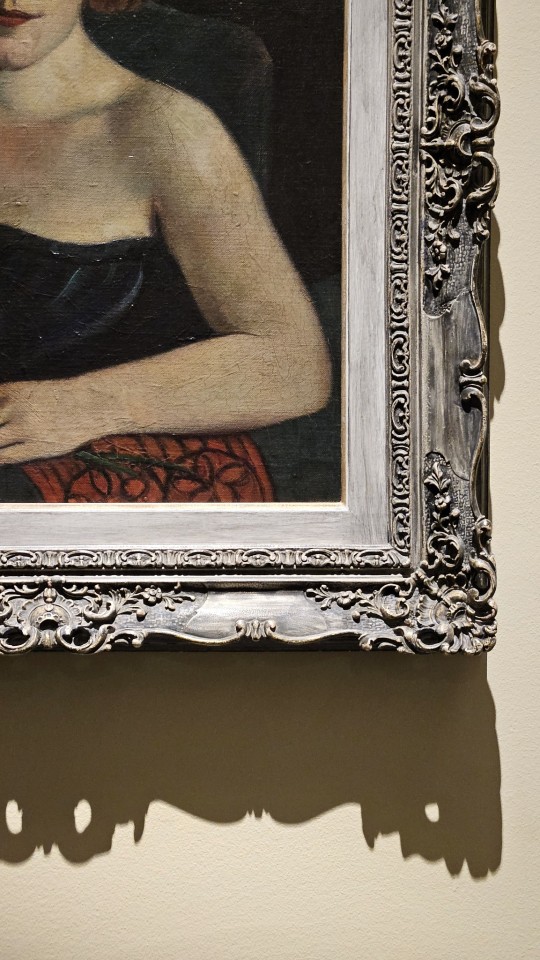#museo del 900
Text
got my ass ate in the bathroom at the Museo del 900, 10/10 would recommend
11 notes
·
View notes
Text
Mamma al nord










1 note
·
View note
Text


Gold bracelet, Tierrandentro culture, Colombia, 200 BC - 900 AD
from The Museo del Oro, Bogota
355 notes
·
View notes
Text
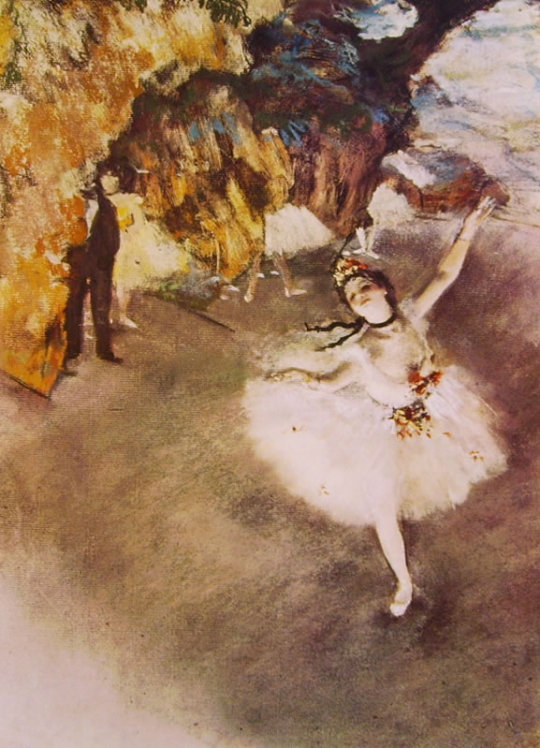



Da: SGUARDI SULL'ARTE LIBRO QUINTO - di Gianpiero Menniti
L'INASPETTATO
Edgar Degas (1834 - 1917) dipinge "Ballerina che fa un saluto", 1878, conservato al Museo d’Orsay a Parigi.
Le forme scompaiono nel colore, riappaiono tra sfumature e contrasti.
Nel 1890 dipinge "Russet Landscape" (Paesaggio color ruggine) e nel 1892 compie sperimentazioni ulteriori con la tecnica del "monotype" che coniuga incisione, disegno e pittura.
Ulteriori poichè già nel 1876 aveva prodotto opere come "Dancer Onstage with a Bouquet" (Ballerina sul palco con un Bouquet, collezione privata).
Potremmo chiuderla qui aggiungendo che si tratti di una direzione di "ricerca" poco nota dell'artista francese.
Qualcosa che nasce nel medesimo contesto dei soggetti tradizionali della sua pittura.
Certo.
Ma perchè?
Ne realizzò circa centoventi di stampe con questa tecnica.
Eppure, negli anni '90 del XIX secolo scompaiono le classiche figurazioni per dare vita a immagini che annullano la forma sondando esperienze visive abissali.
Tuttavia, sullo sfondo delle altre due opere citate, queste rappresentazioni emergevano.
L'irrazionalismo non è una corrente viva nel solo Novecento: è già negli aforismi di Nietzsche, nelle immagini poetiche di Baudelaire e nelle strutture visive dell'Impressionismo.
Degas s'immerge in questa radicale percezione, l'anticipa nell'arte, la rivela facendo segno alla parola del suo tempo.
La realtà non possiede un fondamento e la concezione tragica pervade la lunga stagione che segue alla rivoluzione scientifica e illuminista dei due secoli precedenti.
Per dirla con le parole di Dostoevskij, tratte da "I fratelli Karamazov" (1880):
«Se Dio e l’immortalità dell’anima non esistono tutto è possibile».
Nel 1882, ne "La gaia scienza", Nietzsche afferma perentoriamente:
«Dove se n’è andato Dio? – gridò – ve lo voglio dire! Siamo stati noi ad ucciderlo: voi e io! Siamo noi tutti i suoi assassini! Ma come abbiamo fatto questo? [...] Dello strepito che fanno i becchini mentre seppelliscono Dio, non udiamo dunque nulla? Non fiutiamo ancora il lezzo della divina putrefazione? Anche gli dèi si decompongono! Dio è morto! Dio resta morto! E noi lo abbiamo ucciso! Come ci consoleremo noi, gli assassini di tutti gli assassini? Quanto di piú sacro e di piú possente il mondo possedeva fino ad oggi, si è dissanguato sotto i nostri coltelli; chi detergerà da noi questo sangue? Con quale acqua potremmo noi lavarci? Quali riti espiatòri, quali giochi sacri dovremo noi inventare? Non è troppo grande, per noi, la grandezza di questa azione?».
In entrambi i casi, la fine della "cristianità" - non significa la fine del "cristianesimo" - s'annida nell'espressione figurativa che abbandona ogni certezza e muta in invocazione metafisica: semplicemente, la vocazione alla verità s'infrange con il baratro delle inattingibili origini.
Il '900 comincia da lì, anche da un inaspettato Degas.
7 notes
·
View notes
Photo

Pectoral, Gold Nahuange, A.D. 200–900, Colombia, Magdalena,
Santa Marta, Museo del Oro, Banco de la República, Bogotá.
https://patrons.org.es/golden-kingdoms/
114 notes
·
View notes
Text
LA PALA D'ORO DE SAN MARCOS: LA JOYA MÁS GRANDE DEL MUNDO
THE PALA D'ORO OF SAN MARCOS: THE WORLD'S LARGEST JEWEL
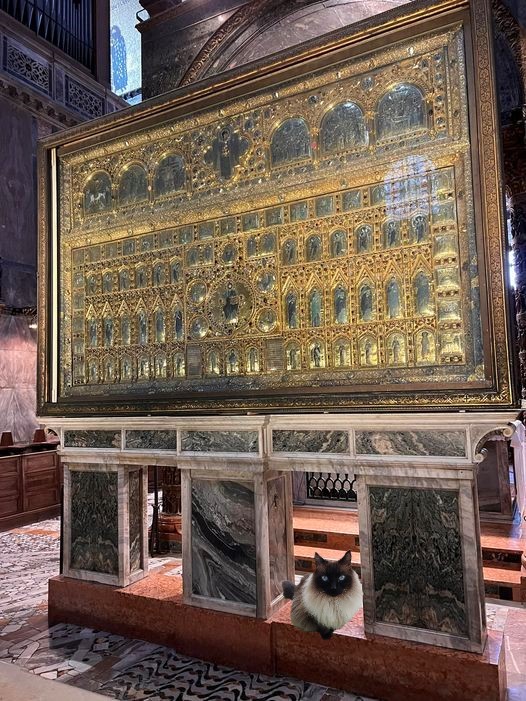
This jewel (I don't mean Mishima) has remained hidden for centuries, because it was not shown to the parishioners on a daily basis, but was hidden behind other works of art and was only revealed at certain celebrations by means of a hidden mechanism.
Esta joya (no me refiero a Mishima) ha permanecido oculta durante siglos, porque no se mostraba de modo diario a los feligreses sino que quedaba oculta detrás de otras obras de arte y sólo se descubría en determinadas celebraciones mediante un mecanismo oculto.
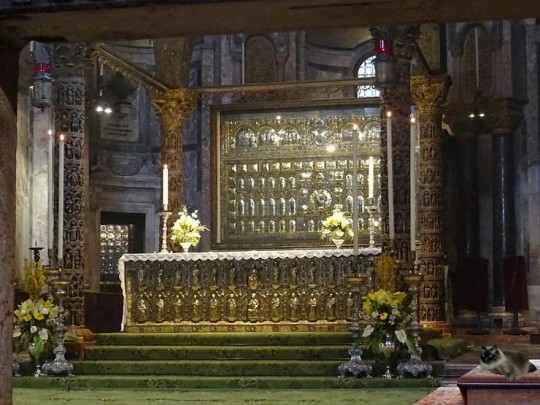
La pala d'Oro cuando se muestra en festividades especiales frente a los fieles mediante un mecanismo de giro. Foto: Gérard, CC BY-SA 4.0, via Wikimedia Commons
The pala d'Oro when it is displayed on special festivities in front of the faithful by means of a turning mechanism. Photo: Gérard, CC BY-SA 4.0, via Wikimedia Commons.
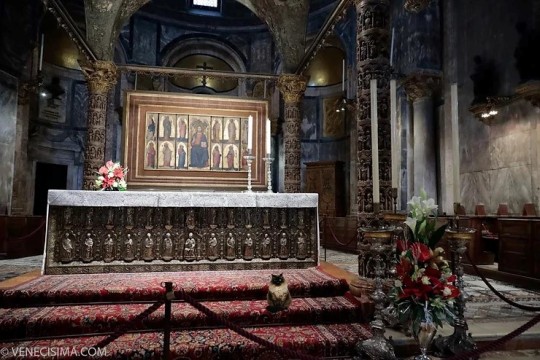
La pala d'Oro oculta tras el retablo de Maffeo da Verona del s. XVII
The pala d'Oro hidden behind Maffeo da Verona's 17th century altarpiece
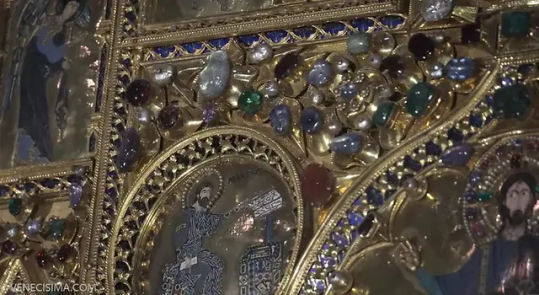
El retablo es inmenso: 3 metros de ancho por 2 metros de alto de oro y plata dorada; 187 placas de esmalte; 1.927 gemas: 526 perlas, 330 granates, 320 esmeraldas, 255 zafiros, 183 amatistas, 175 ágatas, 75 rubíes, 34 topacios, 16 cornalinas, y 13 jaspes ¡Todo un gigantesco joyero!
The tableau is immense: 3 metres wide by 2 metres high in gold and silver gilt; 187 enamel plates; 1,927 gems: 526 pearls, 330 garnets, 320 emeralds, 255 sapphires, 183 amethysts, 175 agates, 75 rubies, 34 topazes, 16 carnelians, and 13 jaspers . A gigantic jewellery box!
(Español / English)
La Pala d'Oro permaneció ocultada celosamente durante 900 años a casi todas las miradas, lo que alimentó la imaginación colectiva con extrañas historias sobre lo que contenía, inclusive se creyó que era una puerta de conexión con el más allá o que tenía tal fuerza espiritual, que quien lo miraba, se convertía al catolicismo.
Y es que la Pala d'Oro se ocultaba entre dos retablos pintados que cubrían ambos lados y la encerraban con catorce cerrojos como una caja fuerte protectora.
Han llegado hasta tres retablos pintados que lo protegieron, de diferentes épocas. Dos de ellos se pueden admirar en el Museo de la Iglesia de San Marcos: el más destacado, pintado por Paolo Veneziano del siglo XIV, y el más reciente, obra de Maffeo da Verona del XVII. El tercero, atribuido a Francesco de’ Franceschi, del siglo XV que está en el prebisterio.
En la actualidad, puede admirarse en cualquier momento, pagando un suplemento adicional se accede desde la derecha del altar mayor. Y os aseguro, que merece la pena ver esta gran joya medieval.
***
The Pala d'Oro remained jealously hidden for 900 years from almost all eyes, which fed the collective imagination with strange stories about what it contained, including the belief that it was a gateway to the afterlife or that it had such spiritual power that those who looked at it were converted to Catholicism.
The Pala d'Oro was hidden between two painted altarpieces that covered both sides and enclosed it with fourteen locks like a protective safe.
Three painted altarpieces from different periods have survived to protect it. Two of them can be admired in the Museum of the Church of San Marco: the most important, painted by Paolo Veneziano in the 14th century, and the most recent, by Maffeo da Verona in the 17th century. The third, attributed to Francesco de' Franceschi, dates from the 15th century and is in the prebistery.
Nowadays, it can be admired at any time, and for an additional fee it can be accessed from the right of the main altar. And I assure you, it is well worth seeing this great medieval jewel.
Source: venecisima.com
#venice#venezia#venecia#san marco#pala d'oro#medieval jewel#joya medieval#arte bizantino#byzantine art
4 notes
·
View notes
Text
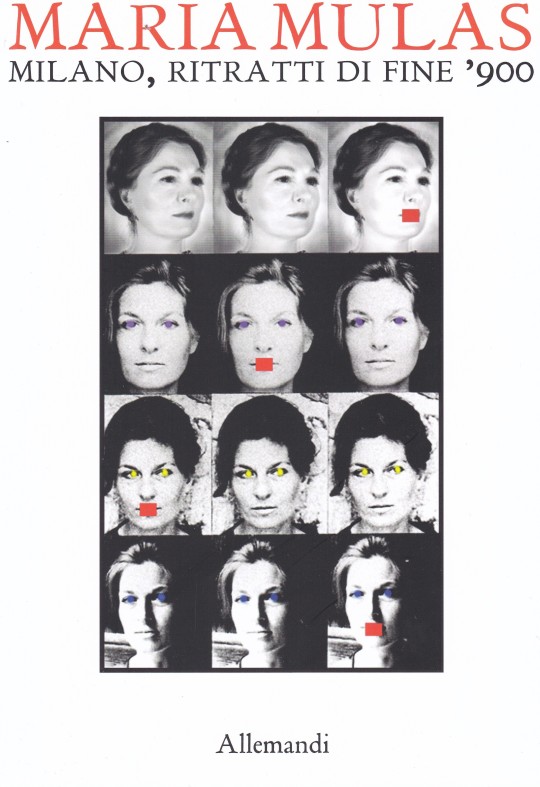

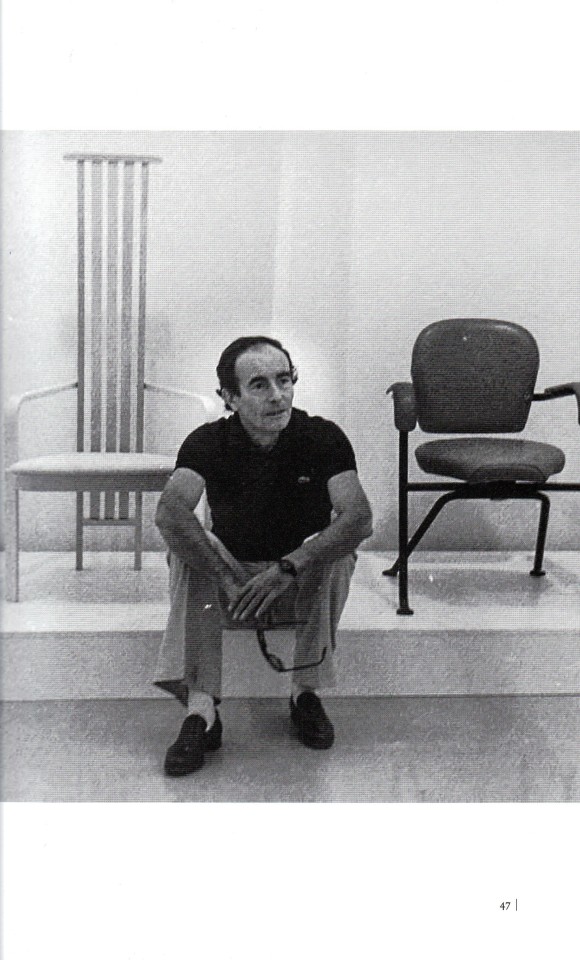


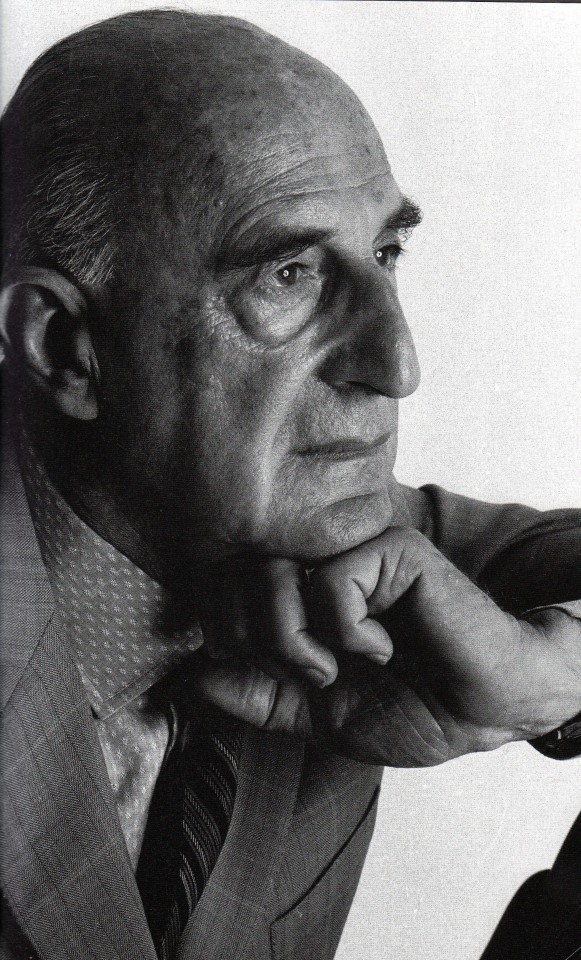
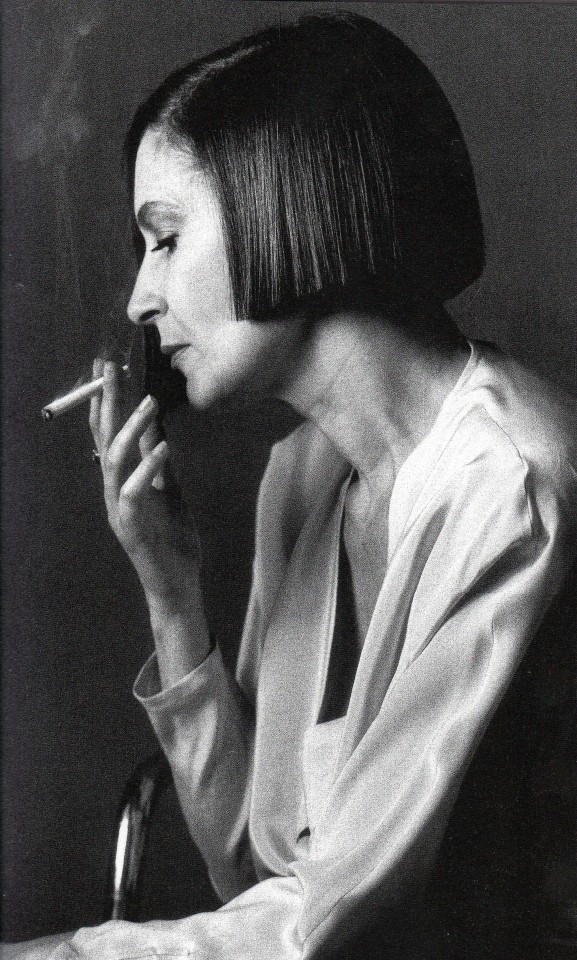
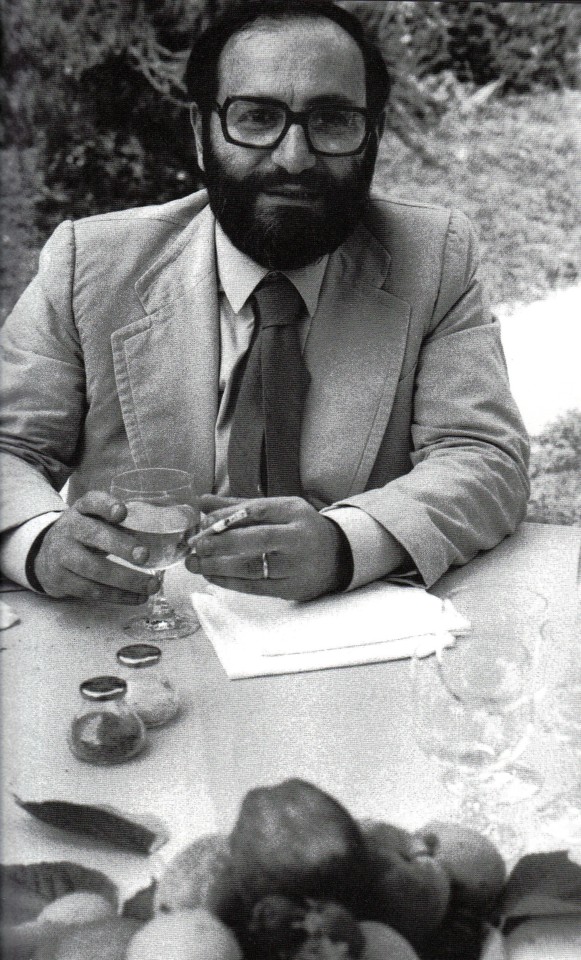





Maria Mulas Milano, Ritratti di fine '900
A cura di Andrea Tomasetig
Testi di Andrea Tomasetig, Paolo Fallai, Stefano Salis, Patrizia Zappa Mulas
Allemandi, Torino 2022, 192 pagine, 89 ilustrazioni, 20x29 cm, Inglese e Italiano, ISBN 9788842225812
euro 25,00
email if you want to buy : [email protected]
Il catalogo, edito in occasione della personale di Maria Mulas a Palazzo Reale a Milano, documenta il percorso di una protagonista della storia della fotografia che, con i suoi scatti, ha mostrato come nessun altro il volto del mondo artistico e culturale milanese, italiano e internazionale.
Gli anni settanta, ottanta e novanta sono per Maria Mulas una girandola di incontri, fra le Biennali veneziane e la Documenta di Kassel, allestimenti e inaugurazioni di mostre, presentazioni di libri, feste e reportage in giro per il mondo. Il suo luogo d’osservazione privilegiato è sempre Milano, città cosmopolita che, come un magnete, accoglie e integra le varie provenienze regionali e straniere, ed è in quegli anni uno straordinario laboratorio di creatività e modernità.
Maria Mulas ha ritratto artisti, galleristi, critici, designer, architetti, scrittori, editori, giornalisti, stilisti, registi, attori, intellettuali, imprenditori, amici. Un elenco dettagliato ne riporta ben 539, dalla «A» di Claudio Abbado alla «Z» di Franco Zeffirelli. Il catalogo Allemandi documenta i cento ritratti esposti nelle sale dell’Appartamento dei Principi di Palazzo Reale, provenienti dalla mostra al Museo Nazionale Slovacco promossa dall’Istituto Italiano di Cultura di Bratislava. Tra le pagine, i volti di: Giorgio Armani, Gae Aulenti, Joseph Beuys, Umberto Eco, Inge Feltrinelli, Dario Fo, Carla Fracci, Allen Ginsberg, Krizia, Marcello Mastroianni, i Missoni, Bruno Munari, Fernanda Pivano, Giò Ponti, Miuccia Prada, Giorgio Strehler, Arturo Schwarz, Ornella Vanoni, Lea Vergine, Gianni Versace, Andy Warhol.
#Maria Mulas#Milano ritratti fine'900#photography exhibition catalogue#Palazzo Reale Milano 2022#Umberto Eco#Krizia#Arturo Schwarz#Lea Vergine#Gianni Versace#Ettore Sottsass#photograhy books#fashionbooksmilano
13 notes
·
View notes
Text
El arte de la antigua Grecia: Un viaje en el tiempo
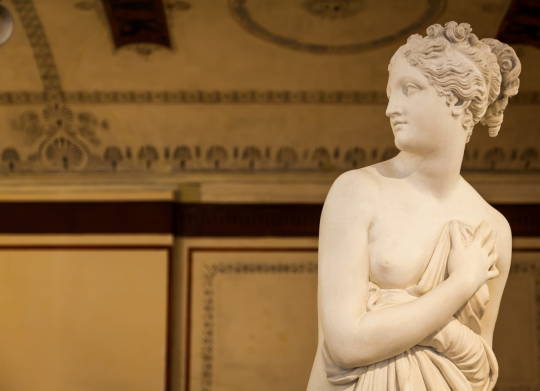
El arte de la Antigua Grecia es testimonio de la creatividad y el ingenio de una civilización que floreció hace más de 2.500 años. Desde las majestuosas esculturas de dioses y diosas hasta la intrincada cerámica y la delicada joyería, el arte de la Antigua Grecia sigue inspirando y cautivando a personas de todo el mundo. En este artículo, haremos un viaje en el tiempo y exploraremos las diferentes formas de arte que caracterizaron este fascinante periodo.
La primera época: Arte geométrico y arcaico
El periodo más antiguo del arte de la Antigua Grecia se conoce como periodo geométrico (900–700 a.C.). Durante esta época, los artistas griegos crearon intrincados diseños y patrones en cerámica utilizando un compás y una regla. Estos diseños incluían formas geométricas como triángulos, círculos y rombos, así como animales y criaturas míticas.
En el siguiente periodo, el Arcaico (700–480 a.C.), aparecieron las primeras esculturas. Estas esculturas eran en su mayoría de mármol o bronce y se crearon para honrar a los dioses y héroes de la Antigua Grecia. La más famosa de estas esculturas es el Kouros, una estatua de un joven erguido con los brazos a los lados. Estas esculturas estaban muy influidas por el arte egipcio, y las figuras se representaban con poses y expresiones rígidas y formales.
El periodo clásico: El perfeccionamiento de la escultura
El periodo clásico (480–323 a.C.) se considera la edad de oro del arte de la Antigua Grecia. Durante este periodo, los artistas griegos perfeccionaron el arte de la escultura, creando figuras realistas que capturaban la belleza y la gracia de la forma humana. Estas esculturas se caracterizaban por sus proporciones idealizadas y sus poses naturalistas. Una de las esculturas más famosas de este periodo es la Venus de Milo, una estatua de la diosa Afrodita que se conserva en el Museo del Louvre de París.
Además de la escultura, el periodo clásico fue testigo del desarrollo de otras formas de arte, como la pintura y la arquitectura. Los artistas griegos empezaron a pintar en cerámica escenas de la vida cotidiana y de la mitología, y también crearon intrincados frescos en las paredes de los edificios. Los arquitectos griegos diseñaron magníficos templos, como el Partenón de Atenas, que siguen en pie como testimonio de su habilidad y creatividad.
El periodo helenístico: El realismo y el drama
El periodo helenístico (323–31 a.C.) supuso una ruptura con la belleza idealizada del periodo clásico. Los artistas griegos empezaron a adoptar el realismo y el dramatismo, creando esculturas que representaban emociones fuertes y detalles realistas. Una de las esculturas más famosas de este periodo es Laocoonte y sus hijos, una estatua que representa al sacerdote troyano Laocoonte y sus dos hijos atacados por serpientes.
El periodo helenístico también fue testigo de la aparición de nuevas formas de arte, como los mosaicos y la escultura en relieve. Los artistas griegos crearon intrincados mosaicos utilizando diminutas piezas de vidrio o piedra coloreada, y también crearon esculturas en relieve que representaban escenas de la mitología y la vida cotidiana.
Conclusión
El arte de la Antigua Grecia es un fascinante viaje a través del tiempo, desde los intrincados diseños del periodo geométrico hasta las esculturas realistas y dramáticas del periodo helenístico. Los artistas griegos eran maestros en su oficio y crearon obras de arte que siguen inspirando y cautivando a la gente hoy en día. Tanto si le gusta la escultura como la pintura o la arquitectura, el arte de la Antigua Grecia tiene algo que ofrecer a todo el mundo.
Originally published at https://artemartinprieto.com/on March 9, 2023.
8 notes
·
View notes
Text

Scena tratta da "Il mistero di Persefone" al Teatro Licinium di Erba, 1929 di Fot. Camuzzi. Milano, Teatro Licinium
more from "Il mistero di Persefone" >>> follow link

source MART · Fondo Giannina Censi · Archivio del '900
Pubblicate in Vaccarino E., (a cura di) Giannina Censi: danzare il futurismo. Milano: Electa; Museo di arte moderna e contemporanea di Trento e Rovereto, 1998, p. 85
#dance scene#mauro camuzzi#giannina censi#dance figure#women artists#futurist women#persefone#persephone#il misterio di persefone#late 1920s#1920s#futurism#futuristic dancer#danzare il futurismo
56 notes
·
View notes
Text







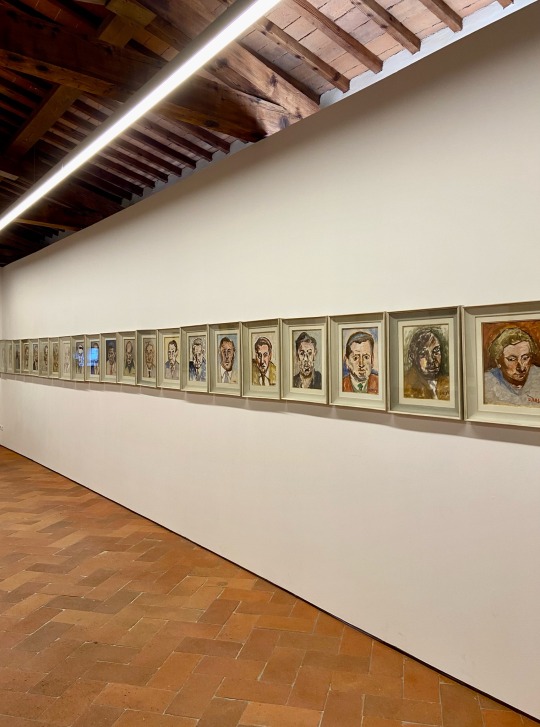

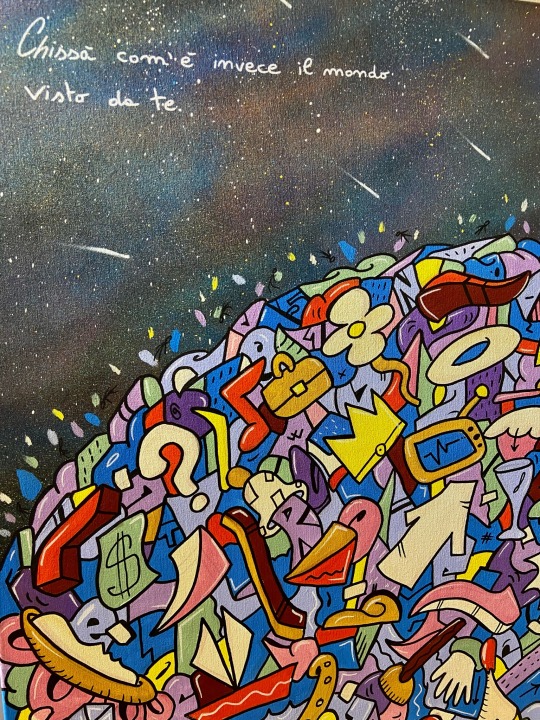
Fughe fiorentine
0 notes
Text
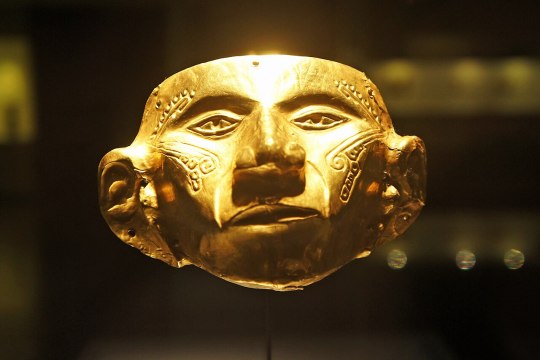
Gold mask, Muisca culture, Colombia, 200 BC - 900 AD
from The Museo del Oro, Bogota
252 notes
·
View notes
Text
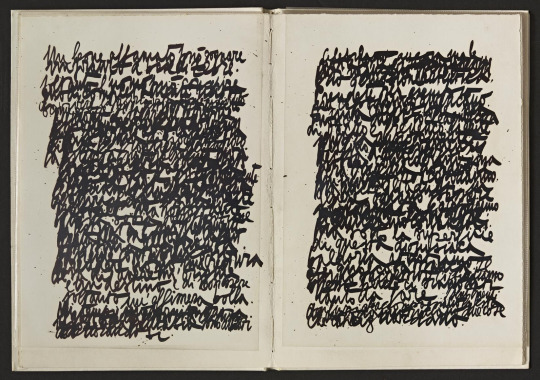
Giancarlo Pavanello, Oscar Wilde nel carcere di Reading 2, (ink on paper), 1977 [Archivio del ‘900, Mart – Museo d'arte moderna e contemporanea di Trento e Rovereto. © Giancarlo Pavanello]
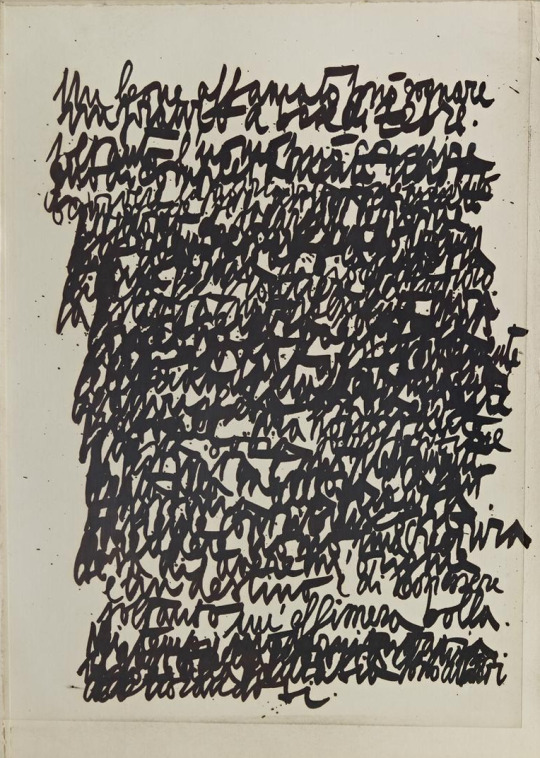
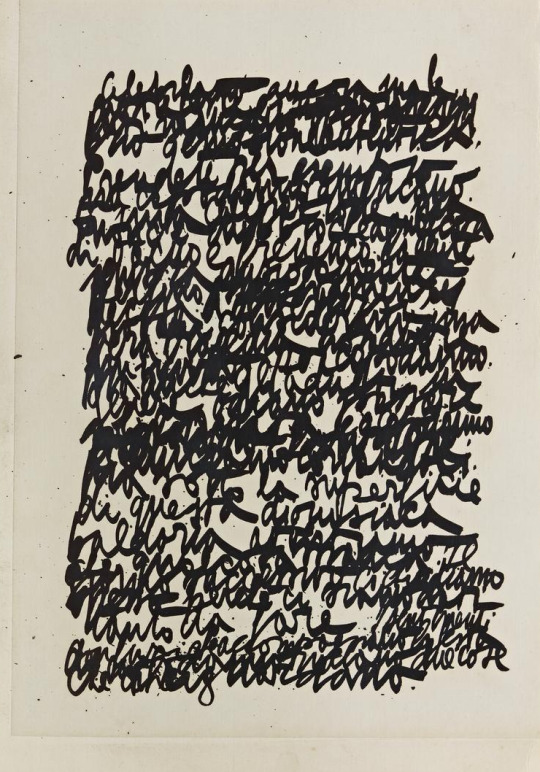
#art#poetry#visual poetry#visual writing#handwriting#calligraphy#book#giancarlo pavanello#mart#museo di arte moderna e contemporanea di trento e rovereto#1970s
32 notes
·
View notes
Text
Ci sono diverse splendide installazioni e mostre permanenti di arte contemporanea in Italia. Ecco alcuni esempi:
1. Museo MAXXI a Roma: Il Museo Nazionale delle Arti del XXI Secolo comprende una vasta collezione di arte contemporanea italiana e internazionale. Il museo ospita anche mostre temporanee che presentano artisti contemporanei di spicco.
2. Fondazione Prada a Milano: La Fondazione Prada offre una combinazione di mostre temporanee e una collezione permanente che include opere di artisti internazionali emergenti e di grande calibro. Il complesso museale, progettato dall'architetto Rem Koolhaas, promuove l'arte, l'architettura e il cinema contemporanei.
3. Museo MADRE a Napoli: Il Museo d'Arte Contemporanea Donnaregina presenta una collezione permanente con opere di artisti come Francesco Clemente, Anish Kapoor e Jeff Koons. Oltre alla collezione, il museo organizza mostre temporanee e progetti artistici.
4. Museo MACRO a Roma: Il Museo di Arte Contemporanea di Roma ospita mostre e installazioni permanenti di arte contemporanea italiana e internazionale. Il suo edificio principale, l'ex stabilimento industriale Peroni, è una cornice suggestiva per l'arte moderna.
5. Museo MAD di Bassano del Grappa: Il Museo d'Arte moderna e contemporanea Mario Rimoldi è situato in una storica villa vicino a Bassano del Grappa, in Veneto. La collezione permanente comprende opere di artisti come Giorgio Morandi, Lucio Fontana e Mario Sironi.
6. Museo Castello di Rivoli a Torino: Il Museo d'Arte Contemporanea di Castello di Rivoli è uno dei principali musei di arte contemporanea in Italia. Situato in un castello storico, il museo presenta mostre e installazioni permanenti che coprono diversi periodi e movimenti artistici.
7. Museo MADeC a Cosenza: Il Museo MADeC (Museo Arte contemporanea e del '900) di Cosenza espone una vasta collezione di opere d'arte moderna e contemporanea di artisti italiani e internazionali. Il museo è ospitato in un ex convento e offre un'esperienza artistica unica nel panorama calabrese.
Questi sono solo alcuni esempi di installazioni e mostre permanenti di arte contemporanea in Italia. Ci sono molti altri musei e spazi espositivi in tutto il paese che offrono al pubblico l'opportunità di immergersi nell'arte contemporanea italiana e internazionale.
2 notes
·
View notes
Photo
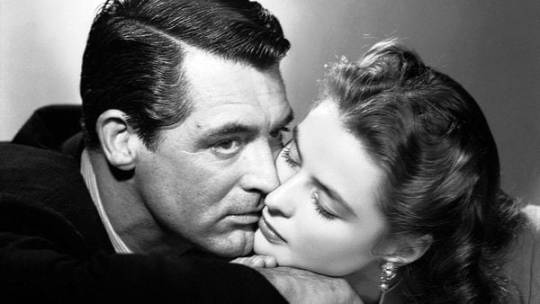
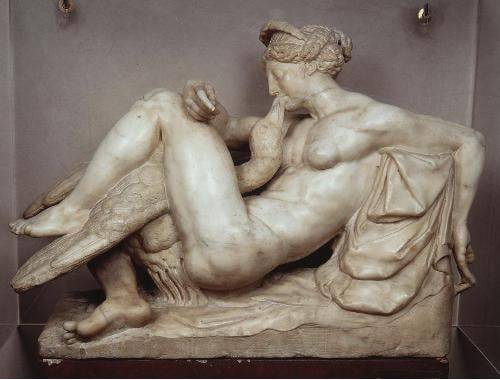
‘900 - di Gianpiero Menniti
ATTORE, DIVO, ‘SIMULACRA’
Quanto in una scena è finzione?
E quanto è sentimento?
In un testo letterario nessuno dubita dei sentimenti dei personaggi: questi si animano nella coscienza del lettore, prendono vita, si manifestano nella loro interezza attraverso il simbolismo nascosto delle parole.
In un testo cinematografico, nel quale le immagini hanno un ruolo fondante, gli attori fanno il loro ingresso nella coscienza dello spettatore e perdono la loro consistenza reale: diventano personaggi.
Eppure, la loro carnalità permane, sullo sfondo, conferendo al loro apparire una traccia di ambiguità: il loro corpo non è più unico ma plurale, pronto a interpretare altri caratteri in nuovi scenari.
Questa proprietà ne muta la fenomenologia.
Così, come in un romanzo, l'attore perde una parte della sua esistenza reale per prendere vita esclusivamente sullo schermo, trasformandosi tuttavia in icona, in "simulacra" al modo degli antichi, i quali ritenevano le rappresentazioni plastiche delle divinità presenza effettiva, vera, tangibile.
Per questa ragione, l’incontro reale con un divo o una diva del cinema, rimane un'esperienza che persino nella più cinica delle persone suscita emozioni complesse e insolite.
Antropologia: disciplina delle regolarità.
- Bartolomeo Ammannati (1511 - 1592): “Leda e il cigno”, 1535 - 1540, Museo nazionale del Bargello, Firenze
#thegianpieromennitipolis#novecento#arte#cinema#bartolomeo ammannati#scultura#arte moderna#Ingrid Bergman#cary grant
22 notes
·
View notes
Text
ANCIENT ART :
Sarcophagus of pakal (683 A.D.) the great King of Palenque.

• The large carved stone sarcophagus lid in the Temple of Inscriptions is a unique piece of Classic Maya art. Around the edges of the lid is a band with cosmological signs for sun, moon, and star, as well as the heads of six named noblemen. The central image is that of a cruciform world tree. Beneath Pakal is one of the heads of a celestial two headed serpent. Both the king and the serpent head on which he rests are framed by the open jaws of a funerary serpent, a common iconographic device for signaling entrance into, or residence in, the realm(s) of the dead.
• Pakal, the great King of Palenque who had ruled for almost 70 years, died. Pakal's time had been one of great prosperity for his people, who honored him by entombing his body inside the Temple of the Inscriptions, a pyramid that Pakal himself had ordered built specifically to serve as his tomb. Pakal was buried in jade finery, including a beautiful death mask. Placed over Pakal's tomb was a massive sarcophagus stone, laboriously carved with an image of Pakal himself being reborn as a god.
• The Maya city of palenque had risen to greatness in the seventh century A.D., only to mysteriously go into decline. By 900 A.D. or so, the once-mighty city was largely abandoned and the local vegetation began to reclaim the ruins. In 1949, Mexican archaeologist Alberto Ruz Lhuillier began an investigation at the ruined Maya city, specifically at the Temple of the Inscriptions, one of the more imposing structures in the city. He found a stairway leading deep into the temple and followed it, carefully breaking down walls and removing rocks and debris as he did so. By 1952, he had reached the end of the passageway and found a magnificent tomb, which had been sealed off for more than a thousand years. There are many treasures and important work of art in Pakal's tomb, but perhaps the most striking was the massive carved stone that covered Pakal's body.
MEDIEVAL ART :
Christ of Mercy between the Prophets David and Jeremiah (between c. 1495 and c. 1500) by Diego de la Cruz
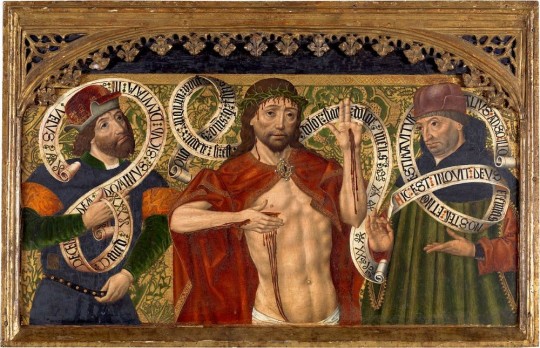
• This devotional, eucharistic image was the central panel in the predella of an altarpiece. Christ is depicted as the Man of Sorrows with the crown of thorns and displaying the wounds of his Crucifixion. The texts on the scrolls refer to his Passion. The artist worked in Burgos, in northern Spain, and collaborated with Gil de Siloé, a sculpture by whom is shown in this room.
• Middle Ages paintings were rich with religious symbolism and imagery. Medieval artists and their paintings predominantly portrayed holy figures and biblical narratives. These narratives had a hierarchy, which was predominantly dictated by the spaces the paintings would occupy. The Medieval artwork that depicted scenes considered to be more important would occupy notable focal points in a church or altarpiece, whereas less significant scenes would radiate outwards.
• Diego de la Cruz was a Spanish painter who may have been of Flemish origin. He was active in Burgos and the neighboring region.His artistic personality is largely defined by two works: Cristo de Varón de Dolores entre la Virgen y San Juan, at the Museo del Prado; his only signed work, probably created between 1475-1480, and the Estigmatización de San Francisco de Asís at the Iglesia de San Esteban de Burgos (1487-1489). Based on an analysis of these works, it has been possible to make other attributions: notably, Cristo de Piedad entre dos ángeles at the Colegiata de Covarrubias , and the Cristo de Piedad entre los profetas David y Jeremías, the central tableau of the predella of an altarpiece and companion to two other tableaux (of the prophets Isaiah and Daniel) in the collection of the University of Liège, which have been attributed to the German painter, Hans Leonhard Schäufelein.
RENAISSANCE ART :
The Last Judgment by Michelangelo Buonarroti (1535–1541)
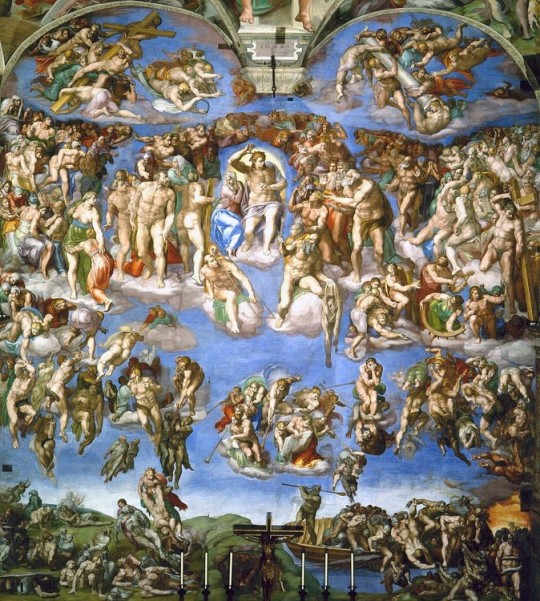
• The painting is about the second coming of Jesus, the day when God shall judge all humanity. Michelangelo has painted Jesus in the center surrounded by saints. The top portion of the painting shows the resurrection of the dead to heaven and the bottom portion shows the descent of sinners into hell. The use of colors and excellent brushwork make this painting of the most revered painting in the world.
• The Last Judgement is the name of the fresco located on the wall behind the altar of the Sistine Chapel in Rome. It was designed and realized by the Renaissance master Michelangelo Buonarroti between 1533 and 1541. Michelangelo’s masterpiece was inspired by Dante’s Divine Comedy and is mentioned by Dan Brown in his Inferno.
• Michelangelo di Lodovico Buonarroti Simoni was an Italian sculptor, painter, architect, and poet of the High Renaissance. Born in the Republic of Florence, his work was inspired by models from classical antiquity and had a lasting influence on Western art. Michelangelo's creative abilities and mastery in a range of artistic arenas define him as an archetypal Renaissance man, along with his rival and elder contemporary, Leonardo da Vinci. Given the sheer volume of surviving correspondence, sketches, and reminiscences, Michelangelo is one of the best-documented artists of the 16th century. He was lauded by contemporary biographers as the most accomplished artist of his era.
MODERN ART :
Radiant Baby by Keith haring (1990)

• Using chalk, he etched his signature designs onto the walls. One of these was his Radiant Baby, which to him was one of the purest and most positive human experiences. It became a recurring visual idiom of Haring’s throughout the years and is now considered the artist’s signature tag. The image represents a pure and positive experience of human existence and is symbolic of Haring’s hope for the future. Although Radiant Baby derives its origin from Christianity it has been used in many of Haring’s other works associated with racism, drug addiction, AIDS awareness and tolerance.
• Keith Allen Haring was an artist and social activist from Pennsylvania whose work was influenced by the New York City street culture and graffiti art of the 1980s. A 1997 Vanity Fair article states that "some of his most characteristic imagery involved figures twirling around and playing together, happy but never aimless." Since Haring's death from AIDS-related illness in 1990, images he created that speak about racism, drug addiction, AIDS awareness and tolerance have become iconic.
CONTEMPORARY ART :
Still face you by Njideka akunyili crosby (2015)

• The artist, wearing a yellow dress, is seen with her husband (in the red shirt) and other family members gathered around a table in an interior. The artist has said that in this painting she was reimagining bringing her husband, a caucasian American whom she met at Swathmore, to Nigeria to meet her family for the first time. The stately rendering of her body in contrappasto evokes both classical sculpture and Old Master painting, The wholly blank expanse in sunshine yellow behind evokes the more contemporary world of abstract painting. The Xerox transfers from Nigerian magazines and from old and more recent family photographs line the walls, articulate the frame of the balcony and animate the patterned dresses worn by the other women present and the checkered upholstered chairs.
• Njideka Akunyili Crosby is a Nigerian-born visual artist working in Los Angeles, California. Through her art Akunyili Crosby "negotiates the cultural terrain between her adopted home in America and her native Nigeria, creating collage and photo transfer-based paintings that expose the challenges of occupying these two worlds". In 2017, Akunyili Crosby was awarded the prestigious Genius Grant from the John D. and Catherine T. MacArthur Foundation.
• When painted in pairs or groups, Akunyili Crosby’s figures rarely meet the viewer’s gaze. Instead, they seem bound up in moments of reflection left open to interpretation by the viewer. Akunyili Crosby’s subjects appear resigned and calm, showing few emotions. Her works render the characters’ mood more than any specific facial features. There is a balance between intimacy and longing, between pleasure and nostalgia.
1:29 pm / Nov,19,2022
2 notes
·
View notes

